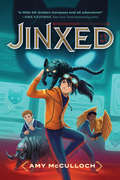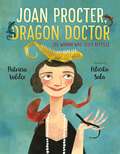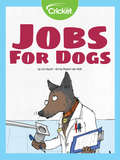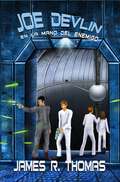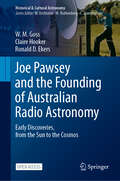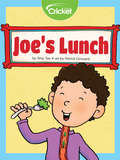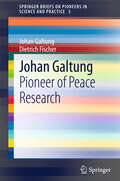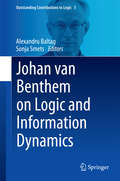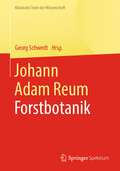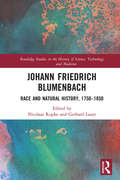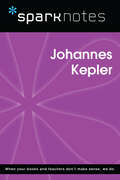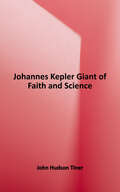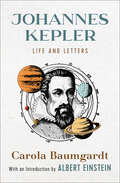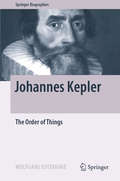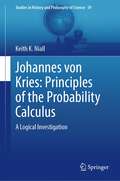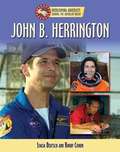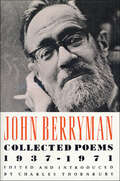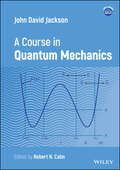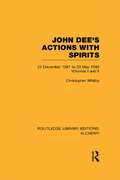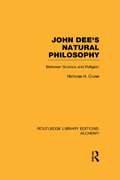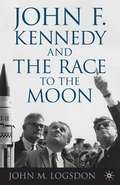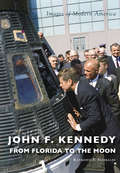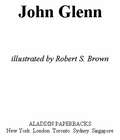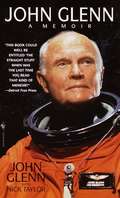- Table View
- List View
Jinxed (Jinxed #1)
by Amy McCullochThe Golden Compass meets the digital age! When a coding star enters an elite technology academy, she discovers a world of competition, intrigue, and family secrets—plus a robotic companion that isn't what it seems.Lacey Chu is a girl who codes. She has always dreamed of working as an engineer for MONCHA, the biggest tech firm in the world and the company behind the "baku"—a customizable "pet" with all the capabilities of a smartphone. But when Lacey is rejected by the elite academy that promises that future, she's crushed.One night, Lacey comes across the broken form of a highly advanced baku. After she repairs it, the cat-shaped baku she calls Jinx opens its eyes and somehow gets her into her dream school. But Jinx is different than any other baku she's ever seen…He seems real.As Lacey settles into life at school, competing with the best students in a battle of the bakus that tests her abilities, she learns that Jinx is part of a dangerous secret. Can Lacey hold on to Jinx and her dreams for the future?Jinxed is the perfect…middle grade book for girls who are passionate about codingsummer reading chapter book for kids 9-12science fiction book for kids 9-12engineer academy bookrobot book for kids"With a sharp eye toward the rising awareness of device addiction and a keen sense of wonder, McCulloch's tale is a feast for the imagination that celebrates women in STEM fields."—Publisher's Weekly, STARRED review"I raced through this book…a little bit Golden Compass and all adventure."—Amie Kaufman, New York Times bestselling author
Joan Procter, Dragon Doctor: The Woman Who Loved Reptiles
by Patricia ValdezFor fans of Ada Twist: Scientist comes a fascinating picture book biography of a pioneering female scientist--who loved reptiles!Back in the days of long skirts and afternoon teas, young Joan Procter entertained the most unusual party guests: slithery and scaly ones, who turned over teacups and crawled past the crumpets.... While other girls played with dolls, Joan preferred the company of reptiles. She carried her favorite lizard with her everywhere--she even brought a crocodile to school!When Joan grew older, she became the Curator of Reptiles at the British Museum. She went on to design the Reptile House at the London Zoo, including a home for the rumored-to-be-vicious komodo dragons. There, just like when she was a little girl, Joan hosted children's tea parties--with her komodo dragon as the guest of honor.With a lively text and vibrant illustrations, scientist and writer Patricia Valdez and illustrator Felicita Sala bring to life Joan Procter's inspiring story of passion and determination.A Chicago Public Library Best Book of the Year selection
Jobs for Dogs
by Liz HuyckDogs have many abilities, along with being super cute–they have great noses that can sniff out smells that humans can’t! Canines are known for their sense of smell, from sniffing luggage in the airport to find illegal items, or having the ability to detect illness, or rescue people, canines are man’s best friend! Discover all the skilled jobs that man’s best friend can do that help people.
Joe Devlin: En la manos del enemigo (Serie Academia Espacial #4)
by James R. ThomasEn el Libro Cuatro de la Serie de la Academia Espacial, la Fuerza Espacial Intergaláctica busca venganza después de ser atacada por un enemigo misterioso. ¿Han unido los turianos fuerzas con un nuevo adversario para exigir su propia venganza? ¿Debería la ISF contraatacar? Mientras tanto, Joe lucha por luchar contra sus demonios de guerra mientras se prepara para embarcarse en una misión clandestina en busca de sus seres queridos. Con el poder del Black Medallion en sus manos, esta empresa puede conducir a la muerte de Joe, si su influencia no lo destruye primero. Ven y únete a Joe Devlin mientras comienza su viaje, ¡pero date prisa! Las cosas se pondrán difíciles rápidamente con paranoia y traición en cada esquina.
Joe Pawsey and the Founding of Australian Radio Astronomy: Early Discoveries, from the Sun to the Cosmos (Historical & Cultural Astronomy)
by Claire Hooker W. M. Goss Ronald D. EkersThis open access book is a biography of Joseph L. Pawsey. It examines not only his life but the birth and growth of the field of radio astronomy and the state of science itself in twentieth century Australia. The book explains how an isolated continent with limited resources grew to be one of the leaders in the study of radio astronomy and the design of instruments to do so. Pawsey made a name for himself in the international astronomy community within a decade after WWII and coined the term radio astronomy. His most valuable talent was his ability to recruit and support bright young scientists who became the technical and methodological innovators of the era, building new telescopes from the Mills Cross and Chris (Christiansen) Cross to the Parkes radio telescope. The development of aperture synthesis and the controversy surrounding the cosmological interpretation of the first major survey which resulted in the Sydney research group's disagreements with Nobel laureate Martin Ryle play major roles in this story. This book also shows the connections among prominent astronomers like Oort, Minkowski, Baade, Struve, famous scientists in the UK such as J.A. Ratcliffe, Edward Appleton and Henry Tizard, and the engineers and physicists in Australia who helped develop the field of radio astronomy. Pawsey was appointed the second Director of the National Radio Astronomy Observatory (Green Bank, West Virginia) in October 1961; he died in Sydney at the age of 54 in late November 1962. Upper level students, scientists and historians will find the information, much of it from primary sources, relevant to any study of Joseph L. Pawsey or radio astronomy.This is an open access book.
Joe's Lunch
by Amy TaoLearn about how the body processes food by following Joe's pizza lunch—from the plate to his mouth to his stomach and beyond. The nutrients from food are absorbed in the small intestine, which are delivered to rest of the body.
Johan Galtung
by Dietrich Fischer Johan GaltungThis is the first ever anthology of key articles by Johan Galtung, widely regarded as the founder of the academic discipline of peace studies. It covers such concepts as direct, structural and cultural violence; theories of conflict, development, civilization and peace; peaceful conflict transformation; peace education; mediation; reconciliation; a life-sustaining economy; macro-history; deep culture and deep structure; and social science methodology. Galtung has contributed original research, concepts and theories to more than 20 social science disciplines, including sociology, international relations and future studies, and has also applied his new insights in practice. The book is a valuable resource for researchers and practitioners, and can serve as a supplemental textbook for graduate and upper undergraduate courses in peace studies and related fields.
Johan van Benthem on Logic and Information Dynamics
by Alexandru Baltag Sonja SmetsThis book illustrates the program of Logical-Informational Dynamics. Rational agents exploit the information available in the world in delicate ways, adopt a wide range of epistemic attitudes, and in that process, constantly change the world itself. Logical-Informational Dynamics is about logical systems putting such activities at center stage, focusing on the events by which we acquire information and change attitudes. Its contributions show many current logics of information and change at work, often in multi-agent settings where social behavior is essential, and often stressing Johan van Benthem's pioneering work in establishing this program. However, this is not a Festschrift, but a rich tapestry for a field with a wealth of strands of its own. The reader will see the state of the art in such topics as information update, belief change, preference, learning over time, and strategic interaction in games. Moreover, no tight boundary has been enforced, and some chapters add more general mathematical or philosophical foundations or links to current trends in computer science. The theme of this book lies at the interface of many disciplines. Logic is the main methodology, but the various chapters cross easily between mathematics, computer science, philosophy, linguistics, cognitive and social sciences, while also ranging from pure theory to empirical work. Accordingly, the authors of this book represent a wide variety of original thinkers from different research communities. And their interconnected themes challenge at the same time how we think of logic, philosophy and computation. Thus, very much in line with van Benthem's work over many decades, the volume shows how all these disciplines form a natural unity in the perspective of dynamic logicians (broadly conceived) exploring their new themes today. And at the same time, in doing so, it offers a broader conception of logic with a certain grandeur, moving its horizons beyond the traditional study of consequence relations.
Johann Adam Reum: Forstbotanik (Klassische Texte der Wissenschaft)
by Georg SchwedtJohann Adam Reum, der Verfasser eines umfassenden Lehrbuches der Forstbotanik, war Professor an der Forstlichen Hochschule Tharandt – heute eine Fakultät der TU Dresden. Er schuf 1811 gemeinsam mit Heinrich Cotta, den bis heute bestehenden Forstbotanischen Garten Tharandt. Bereits 1814 veröffentlichte Reum seinen „Grundriß der deutschen Forstbotanik“. Dieses weit verbreitete Lehrbuch erschien 1837 in der dritten, „sehr verbesserten und vermehrten Auflage“. In einer zeitgenössischen Rezension wurde diesem Werk bescheinigt, dass der beschreibende Teil alle bisherigen forstbotanischen Werke übertreffe. Auch hatte sich die Forstbotanik von einem ökonomisch orientierten forstwirtschaftlichen Fachgebiet zu einer botanischen Spezialwissenschaft entwickelt. Die detaillierten Beschreibungen der einzelnen Bäume und Sträucher, die ausführlichen Angaben zu Gedeihen, Krankheiten und forstlicher Bedeutung sind auch heute noch lesenswert und in vergleichbaren Büchern unserer Zeit kaum noch zu finden.
Johann Friedrich Blumenbach: Race and Natural History, 1750–1850 (Routledge Studies in the History of Science, Technology and Medicine)
by Nicolaas Rupke Gerhard LauerThe major significance of the German naturalist-physician Johann Friedrich Blumenbach (1752–1840) as a topic of historical study is the fact that he was one of the first anthropologists to investigate humankind as part of natural history. Moreover, Blumenbach was, and continues to be, a central figure in debates about race and racism. How exactly did Blumenbach define race and races? What were his scientific criteria? And which cultural values did he bring to bear on his scheme? Little historical work has been done on Blumenbach’s fundamental, influential race work. From his own time till today, several different pronouncements have been made by either followers or opponents, some accusing Blumenbach of being the fountainhead of scientific racism. By contrast, across early nineteenth-century Europe, not least in France, Blumenbach was lionized as an anti-racist whose work supported the unity of humankind and the abolition of slavery. This collection of essays considers how, with Blumenbach and those around him, the study of natural history and, by extension, that of science came to dominate the Western discourse of race.
Johannes Kepler (SparkNotes Biography Guide)
by SparkNotesJohannes Kepler (SparkNotes Biography Guide) Making the reading experience fun! SparkNotes Biography Guides examine the lives of historical luminaries, from Alexander the Great to Virginia Woolf. Each biography guide includes:An examination of the historical context in which the person lived A summary of the person&’s life and achievements A glossary of important terms, people, and events An in-depth look at the key epochs in the person&’s career Study questions and essay topics A review test Suggestions for further reading Whether you&’re a student of history or just a student cramming for a history exam, SparkNotes Biography guides are a reliable, thorough, and readable resource.
Johannes Kepler: Giant of Faith and Science (Sower Ser.sower Series Biographies)
by John Hudson TinerA bibliography of the German astronomer who discovered three laws of planetary motion.
Johannes Kepler: Life and Letters
by Carola BaumgardtWith an introduction by Albert Einstein: The collected letters of the Renaissance astronomer who discovered the laws of planetary motion. Astronomer and mathematician Johannes Kepler made major contributions to the Scientific Revolution of the seventeenth century. While his achievements are well-documented elsewhere, this volume of his personal correspondence offers a rare window into the life of a man who pursued knowledge through a dangerous and turbulent period of history. Spanning more than thirty years, from 1596 to the end of his life, Kepler&’s letters reveal the internal conflicts of a devout Protestant who nevertheless opposed many pronouncements of the Church, an eminent man of science who was also swayed by astrology, and a contemporary of Galileo who served three succeeding Holy Roman Emperors.
Johannes Kepler: The Order of Things (Springer Biographies)
by Wolfgang OsterhageThis book traces the development of Kepler’s ideas along with his unsteady wanderings in a world dominated by religious turmoil. Johannes Kepler, like Galileo, was a supporter of the Copernican heliocentric world model. From an early stage, his principal objective was to discover “the world behind the world”, i.e. to identify the underlying order and the secrets that make the world function as it does: the hidden world harmony. Kepler was driven both by his religious belief and Greek mysticism, which he found in ancient mathematics. His urge to find a construct encompassing the harmony of every possible aspect of the world – including astronomy, geometry and music – is seen as a manifestation of a deep human desire to bring order to the apparent chaos surrounding our existence. This desire continues to this day as we search for a theory that will finally unify and harmonise the forces of nature.
Johannes von Kries: A Logical Investigation (Studies in History and Philosophy of Science #59)
by Keith K. NiallThis book provides an English translation of the work Principles of the Probability Calculus published in 1886 by Johannes von Kries, which discusses the range theory of probability. It offers a novel account of the foundations of probability, an account which was familiar to Keynes, Kneale, Weber, Reichenbach, and von Mises. This account dispenses with the principle of indifference in probability, and it introduces the method of arbitrary functions. Confusions in the history of probability are pinpointed, and a novel theory is developed in which probability is neither entirely subjective nor objective. The book develops what is known as the range theory or Spielraum theory in detail, in a narrative way using few formulas. Von Kries applies range theory to Boltzmann’s theory of the statistical behaviour of gases, and to several applications in medical statistics. Many uses of probability are found wanting; very often they are found not to admit any expression of probability in numbers at all. The book will be of first interest to philosophers of science and historians interested in the foundations of probability. It is also of general interest to anyone who applies statistics everyday in such fields as econometrics, psychology, or medicine.
John Audubon and the World of Birds for Kids: His Life and Works, with 21 Activities (For Kids series #76)
by Michael Elsohn RossJohn James Audubon's passion for birds inspired a national movement to protect birds and their habitats. As a child, John would often skip school to roam the countryside. He collected bird nests, unique stones, bits of moss, and other items of interest and developed his talent for creating dramatic bird portraits and skills for observing them in the wild. Using his abilities as an acute observer, skilled writer, and exceptional artist, Audubon wrote and illustrated a book, Birds of America. Cataloging all these creatures took enormous time and effort—but even more difficult was finding a way to publish it. To make his book a reality he had to persuade wealthy investors to support his dream. The stories of his adventures pursuing the unique birds of the America captured the imagination of audiences. Audubon became a larger-than-life figure and dubbed himself "the American Woodsman." Years after his death his artwork is still considered a major accomplishment that inspired a greater interest in American birdlife.John Audubon and the World of Birds for Kids includes 21 hands-on activities and valuable resources for budding ornithologists hiking in his footsteps.
John B. Herrington
by Stacia Deutsch Rhody CohonEach book in the "Sharing the American Dream: Overcoming Adversity" series features a biography of the challenges these people faced during their lives. The series is interesting, lively, accurate, factual, and up-to-date. Information about each celebrity's personal lives and romantic relationships, in addition to his or her professional achievements is included, as well as individual philanthropic efforts.
John Berryman: 1937–1971
by John BerrymanThis volume brings together all of John Berryman's poetry, except for his epic The Dream Songs, ranging from his earliest unpublished poem (1934) to those written in the last months of his life (1972). John Berryman: Collected Poems 1937-1971 is a definitive edition of one of America's most distinguished poets.
John David Jackson: A Course in Quantum Mechanics
by John David JacksonA Course in Quantum Mechanics Unique graduate-level textbook on quantum mechanics by John David Jackson, author of the renowned Classical Electrodynamics A Course in Quantum Mechanics is drawn directly from J. D. Jackson’s detailed lecture notes and problem sets. It is edited by his colleague and former student Robert N. Cahn, who has taken care to preserve Jackson’s unique style. The textbook is notable for its original problems focused on real applications, with many addressing published data in accompanying tables and figures. Solutions are provided for problems that are critical for understanding the material and that lead to the most important physical consequences. Overall, the text is comprehensive and comprehensible; derivations and calculations come with clearly explained steps. More than 120 figures illustrate underlying principles, experimental apparatus, and data. In A Course in Quantum Mechanics readers will find detailed treatments of: Wave mechanics of de Broglie and Schrödinger, the Klein-Gordon equation and its non-relativistic approximation, free particle probability current, expectation values. Schrödinger equation in momentum space, spread in time of a free-particle wave packet, density matrix, Sturm-Liouville eigenvalue problem. WKB formula for bound states, example of WKB with a power law potential, normalization of WKB bound state wave functions, barrier penetration with WKB. Rotations and angular momentum, representations, Wigner d-functions, addition of angular momenta, the Wigner-Eckart theorem. Time-independent perturbation theory, Stark, Zeeman, Paschen-Back effects, time-dependent perturbation theory, Fermi’s Golden Rule. Atomic structure, helium, multiplet structure, Russell-Saunders coupling, spin-orbit interaction, Thomas-Fermi model, Hartree-Fock approximation. Scattering amplitude, Born approximation, allowing internal structure, inelastic scattering, optical theorem, validity criterion for the Born approximation, partial wave analysis, eikonal approximation, resonance. Semi-classical and quantum electromagnetism, Aharonov-Bohm effect, Lagrangian and Hamiltonian formulations, gauge invariance, quantization of the electromagnetic field, coherent states. Emission and absorption of radiation, dipole transitions, selection rules, Weisskopf-Wigner treatment of line breadth and level shift, Lamb shift. Relativistic quantum mechanics, Klein-Gordon equation, Dirac equation, two-component reduction, hole theory, Foldy-Wouthuysen transformation, Lorentz covariance, discrete symmetries, non-relativistic and relativistic Compton scattering.
John Dee's Actions with Spirits: 22 December 1581 to 23 May 1583 (Routledge Library Editions: Alchemy)
by Christopher WhitbyThis was originally a two volume set which is now bound as one. Here is presented an investigation of the nature of the earliest extant records of the supposed communication with angels and spirits of John Dee (1527-1608) with the assistance of his two mediums or 'scryers', Barnabas Saul and Edward Kelly. Volume 2 of this work is a transcription of the records in Dee's hand contained in Sloane MS 3188, which has been transcribed only once before, by Elias Ashmole in 1672. Volume 1 is an introduction and thorough commentary to the text which is primarily explaining its many obscurities. The author describes the physical state of the manuscript and its history then continues with a biography of Dee and his scryers and some background to Renaissance occult philosophy. Further chapters address the arguments that the manuscript represents a conscious fraud or a cryptographical exercise and describe the magical system and instruments evolved during the communications or 'Actions'. The last, fascinating chapter examines Dee's motives for believing so strongly in the truth of the Actions and suggests that a principal motive was the conviction, not held by Dee alone, that a new age was about to dawn upon earth.
John Dee's Natural Philosophy: Between Science and Religion (Routledge Library Editions: Alchemy)
by Nicholas CluleeThis is the definitive study of John Dee and his intellectual career. Originally published in 1988, this interpretation is far more detailed than any that came before and is an authoritative account for anyone interested in the history, literature and scientific developments of the Renaissance, or the occult. John Dee has fascinated successive generations. Mathematician, scientist, astrologer and magus at the court of Elizabeth I, he still provokes controversy. To some he is the genius whose contributions to navigation made possible the feats of Elizabethan explorers and colonists, to others an alchemist and charlatan. Thoroughly examining Dee’s natural philosophy, this book provides a balanced evaluation of his place, and the role of the occult, in sixteenth-century intellectual history. It brings together insights from a study of Dee’s writings, the available biographical material, and his sources as reflected in his extensive library and, more importantly, numerous surviving annotated volumes from it.
John F. Kennedy and the Race to the Moon
by John M. LogsdonWhile there are many biographies of JFK and accounts of the early years of US space efforts, this book uses primary source material and interviews with key participants to provide a comprehensive account of how the actions taken by JFK's administration have shaped the course of the US space program over the last 45 years.
John F. Kennedy: from Florida to the Moon (Images of Modern America)
by Raymond P. SinibaldiIt was September 12, 1962, when Pres. John F. Kennedy delivered a speech at Rice University before nearly 50,000 people. By that time, America had launched but four men into space--the suborbital flights of Alan Shepard and Gus Grissom and the nearly identical three-orbit journeys of John Glenn and Scott Carpenter. Buoyed by the success of those missions and cognizant of the danger that lay ahead, the president rearticulated his vision and reissued his challenge to reach the moon before 1970. "We choose to go to the moon, in this decade and do the other things, not because they are easy, but because they are hard. Because that goal will serve to organize and measure the best of our energies and skills." The assassination of President Kennedy, in the words of flight director Gene Kranz, turned his vision into a "quest to do it and do it in the time frame he allotted." On July 20, 1969, Neil Armstrong stepped off the ladder of the lunar module known as Eagle, taking "one small step for man, one giant leap for mankind."
John Glenn
by Robert Brown Michael BurganDear Reader: The Childhood of Famous Americans series, sixty-five years old in 1997, chronicles the early years of famous American men and women in an accessible manner. Each book is faithful in spirit to the values and experiences that influenced the person's development. History is fleshed out with fictionalized details, and conversations have been added to make the stories come alive to today's reader, but every reasonable effort has been made to make the stories consistent with the events, ethics, and character of their subjects. These books reaffirm the importance of our American heritage. We hope you learn to love the heroes and heroines who helped shape this great country. And by doing so, we hope you also develop a lasting love for the nation that gave them the opportunity to make their dreams come true. It will do the same for you. Happy Reading! The Editors
John Glenn: A Memoir
by John Glenn Nick TaylorHe was the first astronaut to orbit the Earth. Nearly four decades later, as the world's oldest astronaut, his courage riveted a nation. But these two historical events only bracketed a life that covers the sweep of an extraordinary century. John Glenn's autobiography spans the seminal events of the twentieth century. It is a story that begins with his childhood in Ohio where he learned the importance of family, community, and patriotism. He took these values with him as a marine fighter pilot during World War II and into the skies over Korea, for which he would be decorated. Always a gifted flier, it was during the war that he contemplated the unlimited possibilities of aviation and its frontiers. We see the early days of NASA, where he first served as a backup pilot for astronauts Alan Shepard and Gus Grissom. In 1962 Glenn piloted the Mercury-Atlas 6 Friendship 7 spacecraft on the first manned orbital mission of the United States. Then came several years in international business, followed by a twenty-four year career as a U. S. Senator-and in 1998 a return to space for his remarkable Discover mission at the age of seventy-seven.
